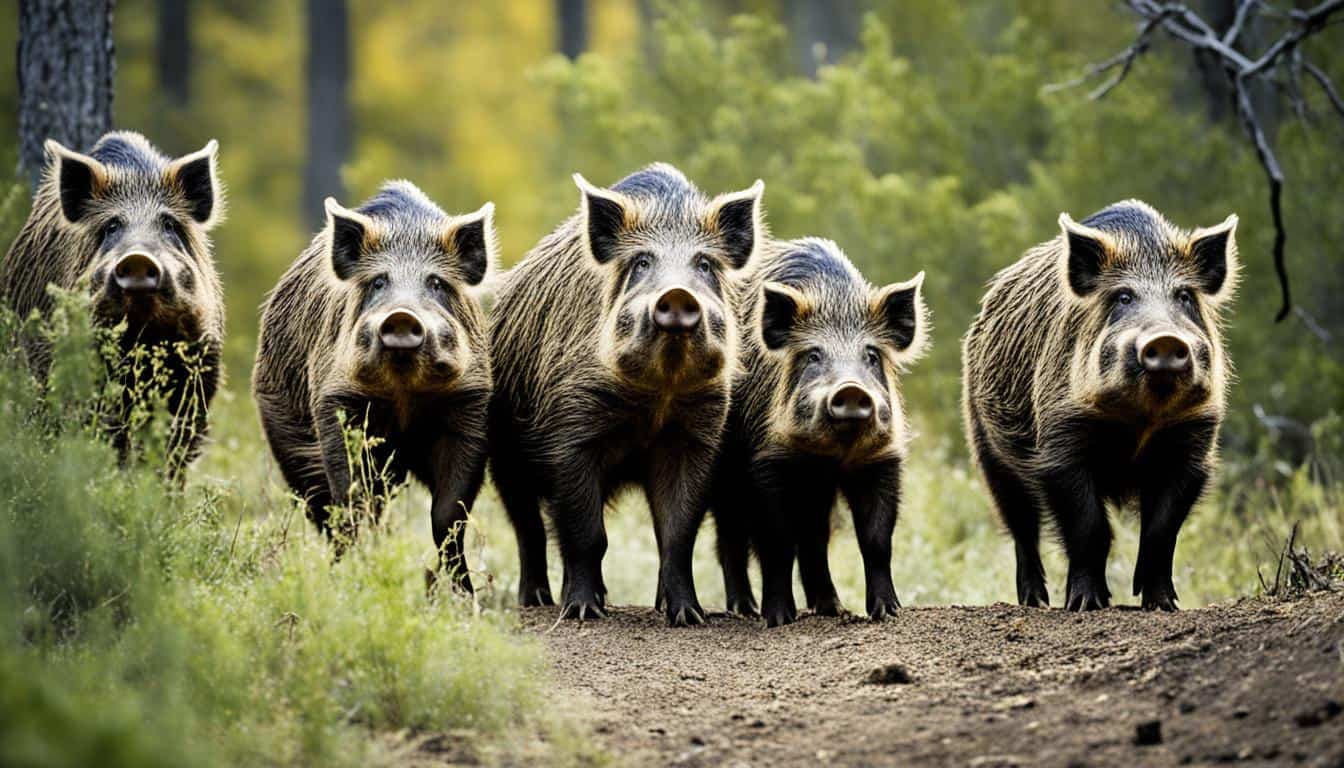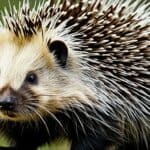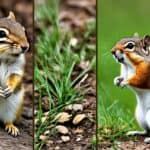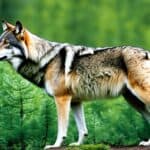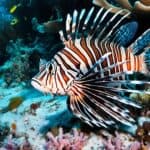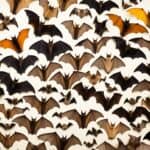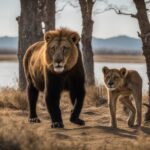Have you ever wondered if the United States is home to wild pigs? The country is indeed facing a big issue with feral pig numbers. These pigs were first brought by European settlers. They were later added to by boars bred for hunting in the 1900s. Now, they live in many states. They spread fast because they can live in many different places and not many animals eat them.
This mix of wild and once-domestic pigs means big problems for the USA. Many millions of these pigs are living here now. Their growing numbers are causing big issues for both the environment and our money. But why is this happening now? What are we going to do about it?
Introduction to Wild Boars in the USA
Wild boars came to the United States over 500 years ago. Since then, they’ve become a part of our environment. They’ve both thrived and caused problems for our lands.
Brief History of Wild Boars
European explorers first brought wild boars to North America in the 1500s. These boars came from domestic pigs that got loose. Some were also brought in for hunting. This mix of ancestors shows in the wild boars we see today in the USA.
Scientific Name and Common Names
The scientific name for the wild boar is Sus scrofa Linnaeus. It’s also commonly known as the feral hog, razorback, and Eurasian wild boar. These names show how known and widespread wild boars have become. It also brings to light the issues they cause by being in many regions.
The variety of names used for them shows how they are important in different places. But it also highlights the big challenge of controlling their numbers.
| Scientific Name | Common Names | Region of Introduction |
|---|---|---|
| Sus scrofa Linnaeus | Feral Hog | USA |
| Sus scrofa Linnaeus | Razorback | USA |
| Sus scrofa Linnaeus | Eurasian Wild Boar | USA |
Rapid Expansion of the Feral Pig Population
There’s been a big growth in the feral pig population in the USA. This growth has taken them to many places in the country. Various factors help these animals thrive and they are now a top invasive species in the US.
Factors Contributing to Expansion
Wild boars do well because they eat just about anything, have many babies, and can live in different places. They eat many types of food, including crops. This helps them eat well and make homes in various landscapes.
Impact of Human Translocation
People have pushed the spread of feral pigs. Releasing these animals for hunting has actually made their numbers grow faster. So, now they live in more places and harm the local environment.
Lack of Natural Predators
Without enough predators, feral pigs can grow in number easily. This growth has upset many local ecosystems. The lacking predator problem is a main reason why feral pigs are such a big issue in the US.
| Factors | Description |
|---|---|
| Diet | Omnivorous diet allows adaptation to various environments. |
| Reproductive Rates | High reproduction rates contribute to rapid population growth. |
| Human Translocation | Release for hunting purposes spreads population. |
| Lack of Predation | Absence of natural predators leads to unchecked growth. |
Current U.S. Distribution of Wild Boars
Wild pigs in the U.S. can now be found in over 35 states. This large number shows they are everywhere. Their wide presence is a problem that must be tackled.
States with Significant Populations
States like Texas, Florida, and California have a lot of wild boars. This poses big problems. Wild boars damage the environment and farming. So, it’s a big issue for these places.
Estimated Population Numbers
There are over six million wild boars in the U.S. That’s a lot of animals. It’s why we need good plans to manage them. Check the table below for numbers by state:
| State | Estimated Population |
|---|---|
| Texas | 2.6 million |
| Florida | 500,000 |
| California | 400,000 |
| Other States | 2.5 million (combined) |
The figures show many wild boars are out there. It means we have a lot of work to do. Figuring out where they are is key to controlling their numbers.
Ecological and Economic Impact of Wild Boars
Wild boars in the US have brought big problems. They hurt the environment and the economy. This makes it really important to control them.
Damage to Native Plants and Crops
Wild boars love to dig and stomp on plants. They wreck natural areas and farms. This is a big deal for farmers and nature alike. It affects the local mix of plants and animals for a long time.
Competition with Native Species
Wild boars fight with local animals for space and food. This makes their invasion worse. It lowers the numbers of local plants and animals, messing up nature’s balance. It hurts the variety of species too.
Impact on Local Ecosystems
Wild boars harm more than just plants and animals. They can make soil wash away and water dirty. This isn’t good for nature as a whole. They can also spread diseases, which affect wild animals and sometimes people. This makes them very hard to deal with. It adds to the costs of keeping nature healthy and safe.
We really need to find good ways to deal with wild boars. This is to lessen the harm they do to the economy and the environment as a whole.
Wild Boar Sightings and Reports
Reports of wild boar sightings in the USA are increasing. They’re seen in both cities and the countryside. This helps experts learn more about their habits and how they’re spreading.
Recent Sightings Across the USA
Wild boars have been spotted in many states. They can live from the city to deep forests. Texas, California, and Florida are seeing more of these feral pigs. This growth worries people and wildlife officials.
Public and Government Reports
Records from both the public and the government help in understanding these animals. They gather information from local experts and concerned citizens. Such data is key for managing the wild boar population.
The table below shows some of the recent wild boar sightings and their estimated numbers:
| State | Recent Sightings | Population Estimates |
|---|---|---|
| Texas | High frequency in rural and suburban areas | Estimated over 2 million |
| California | Notable increase in foothill regions | Estimated around 500,000 |
| Florida | Frequent encounters in agricultural zones | Estimated around 1 million |
These reports and sightings stress the need for careful observation. Understanding wild boars’ behavior can help control their numbers and effects.
Are There Wild Boars in the USA?
More and more, wild boars are being seen all across the United States. They are very adaptable animals. They can live in many different places, which helps them breed and grow in number.
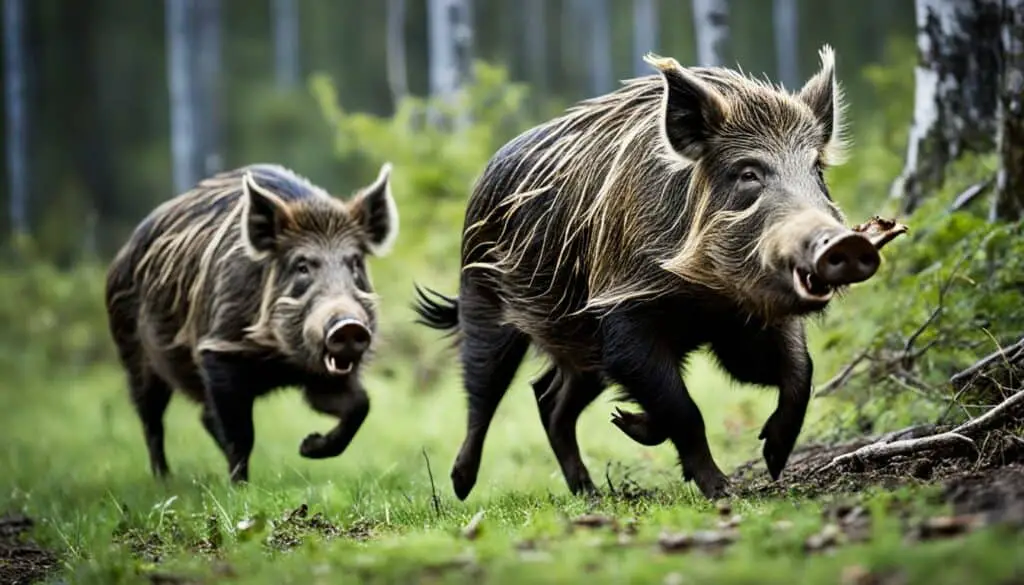
Many studies and damage reports show that wild boars are here to stay in the USA. We see them a lot, and they are spreading out wide.
These wild pigs create many problems. They hurt our society and nature. Because they can have babies fast and are tough, it’s hard to control their numbers.
Everywhere you go, you might spot a wild boar. They show us how big their effect is on us and our environment. Stopping them from causing more trouble is a big task.
Wild boars cause harm from farms to nature areas. The issues they bring need careful thought and strong solutions. We must understand them well and find ways to keep their numbers in check.
Hunting Wild Boars in the USA
In the United States, hunting wild boars is essential for managing their population growth. This helps keep the ecosystem in balance. Hunters can choose from various methods, all with specific rules to ensure hunts are both safe and effective. By controlling the boar population, the impact of these invasive animals is reduced.
Methods and Techniques
Methods for hunting wild boars in the USA include baiting, trapping, and using dogs. Each method has its own benefits and care to prevent harm to other wildlife. Night vision scopes and thermal imaging are tools hunters might use. These gadgets help track the boars at night, making hunting more effective.
Legal Regulations and Guidelines
Each state has legal hunting regulations for wild boars. These laws detail when and how you can hunt, along with what gear to use. Following these guidelines is crucial for ethical hunting. Some states even offer rewards to hunters who help control the boar population.
Impact on Population Control
When hunting is done extensively, it can really make a difference. Programs that involve both communities and organized efforts by the state have shown great results. This teamwork has led to a significant decrease in boar numbers. It has also helped protect agriculture and restore natural habitats.
| State | Primary Hunting Method | Legal Requirements | Impact on Population |
|---|---|---|---|
| Texas | Trapping and Shooting | Year-round; No License Required | High Reduction |
| Florida | Night Vision Hunting | Seasonal; License Required | Moderate Reduction |
| California | Dog-assisted Hunts | Restricted Area; Permit Required | Low to Moderate Reduction |
| Georgia | Baiting | Year-round; License Required | Moderate to High Reduction |
Feral Pigs as an Invasive Species in the US
Feral pigs are a big problem in the US because they’re not from here. They have lots of babies fast and destroy our lands and farms. This makes them a big danger to our plant and animal life.
What Makes Them Invasive?
These pigs can live in many places because they can adapt well. They dig up the ground and make it hard, and they also ruin the plants. This not only hurts our food but also the homes of wild animals, causing big problems for nature.
Efforts to Control the Spread
People are trying different ways to stop these pigs. They hunt them, catch them in traps, and try to change their living areas. By working together, we hope to make their numbers lower and save our land.
Success Stories and Challenges
Some places have seen fewer pigs because of these actions, but it’s still tough. These pigs have lots of babies and run away from us. We need to keep learning and finding new plans to keep our lands safe from them.
Future Outlook for Wild Boars in the USA
The USA is seeing a sharp rise in wild boars, which poses major wildlife management challenges. Being an invasive species, they harm the environment greatly by destroying habitats, competing with local species, and causing damage to farms. To tackle these problems, we must find a balance in controlling the boar population while understanding their role in nature.
Our efforts to manage wild boars focus on things like controlled hunting, changing habitats, and studying their habits. These steps, along with keeping an eye on them, are crucial in lessening their effect on the environment. There’s a big debate on how to control their spread into new areas efficiently, which needs new, smart solutions from both conservationists and policy makers.
Looking to the future, we need policies that are well-informed and practical. Some suggest a more detailed approach, blending efforts to control the boars with goals to save wildlife. By bringing together scientists, government officials, and neighborhoods, the USA could find long-term ways to deal with wild boars in a way that’s beneficial for everyone.
FAQ
Are there wild boars in the USA?
Yes, the USA has wild boars in 35 states. There are over six million of them. They come from domestic pigs and wild ones brought in for hunting.
What is the history of wild boars in the USA?
Over 500 years ago, they came with Europeans. Their numbers grew because they escaped and were released for hunting.
What is the scientific name for wild boars?
The scientific name is Sus scrofa Linnaeus. They are also called feral pigs, razorbacks, and Eurasian wild boars.
Why has the feral pig population expanded rapidly in the USA?
They spread fast due to their ability to live in different places. People moved them to hunt, and they have few enemies here.
Which states in the USA have significant populations of wild boars?
Texas, Florida, and California see a lot of these pigs. They bring big problems for nature and money.
What is the impact of wild boars on native ecosystems and agriculture?
They hurt plants, compete with local animals, and mess up the ecosystem. This costs a lot of money and hurts nature.
Are there any recent wild boar sightings in the USA?
Lately, people see them a lot, even in cities. These sightings help us know more about their habits and where they live.
What methods and techniques are used for hunting wild boars in the USA?
People use traps, baits, and hunt them at night to keep their numbers down. Laws make sure this is done safely for the environment and economy.
Why are feral pigs considered an invasive species in the USA?
They are called invasive because they destroy things and have babies fast. This is really bad for our land and economy.
What efforts are being made to control the spread of wild boars?
Hunting, fixing their habitat, and telling people about them are some ways. But it’s hard to stop them from causing harm.
What is the future outlook for managing wild boars in the USA?
We are trying to figure out how to lessen their harm without hurting the whole environment. Rules and strategies are being thought up all the time.

